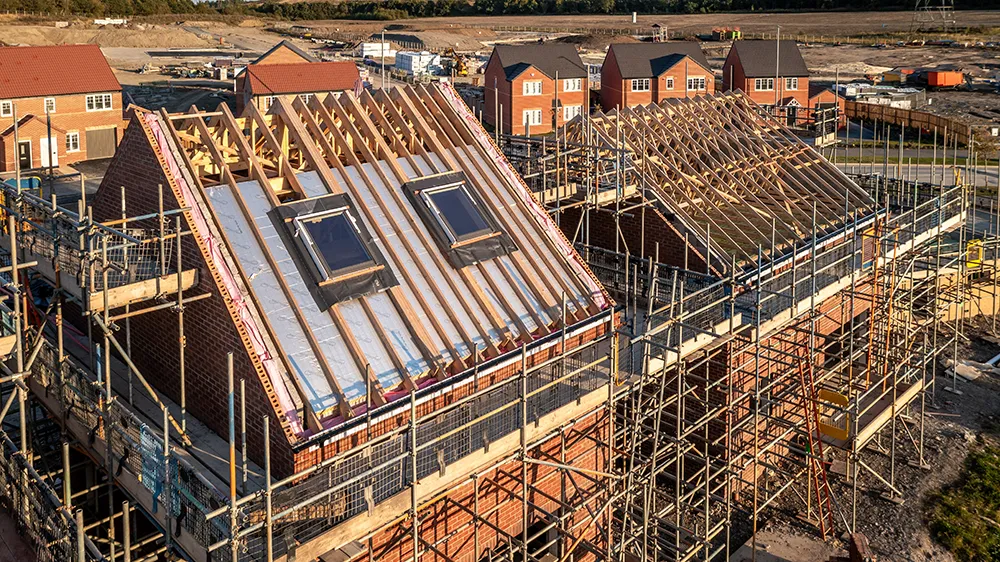
Labour’s 10-year infrastructure strategy to help it build 1.5 million homes over this parliament sees the return of Public Private Partnerships and hands a key role to its new building body.
The government’s £725bn plan also sets out plans to build roads, railways, hospitals, and schools across the UK over the next decade.
The Treasury says: “The strategy provides the certainty and stability needed to attract investment, boosting British supply chains and jobs, and takes a joined-up view to improve planning and delivery across all types of infrastructure.”
Housing bank
The government’s paper, UK Infrastructure: A 10 year Strategy, releases more detail on the financial structure of the new National Housing Bank, announced yesterday.
The bank, under housing agency Homes England, aims to build “at least 580,000 additional homes”, by attracting £53bn of private investment.
It will be backed by £16bn of taxpayer cash, of which £10.5bn is in loans and equity and £5.5bn in guarantees. On top of this, it will also have access to a further £6bn of existing finance.
The Treasury says: “This will enable Homes England to offer a broader range of development finance products such as revolving credit facilities to smaller housebuilders, and more flexible equity products such as subordinated equity where government takes greater risk and can leverage higher volumes of institutional capital to support more complex development schemes.”
Back to PPPs
One of the means Labour will attract private finance is returning to controversial public private partnerships, which have not been used by central government since 2018.
The Treasury admits these 25- to 30-year contracts between the state and firms to build and run public services such as schools and hospitals drew criticism because early contracts were accused of being complex and inflexible and lacked value for money.
But the government says, “PPP models continue to be used globally, including by local and devolved governments in the UK”.
It adds: “A well-designed PPP model can bring in private sector discipline to reduce deliverability risk as the private sector is incentivised to deliver to budget and time.”
Labour says it will “explore the use of PPP models” in plans for the regeneration of Euston Station, which will include an upgraded HS2 terminus, shops, offices and social housing across a 60-acre site.
Role of the National Infrastructure and Service Transformation Authority
Becky Wood, the chief executive of the National Infrastructure and Service Transformation Authority established in April, will be key to the delivery of everything from new homes, to prisons and roads.
The Treasury points out: “The National Infrastructure and Service Transformation Authority will oversee the implementation of the Strategy, as well as supporting progress reports to accompany future spending reviews.”
Wood says: “This investment is a welcome part of the 10-year infrastructure strategy and will help us to address some of the challenges that our key public services have faced over recent years.”
Chancellor Rachel Reeves adds: “This will deliver the decade of national renewal we promised Britain, and fulfil our plan for change goals to kickstart economic growth, and build an NHS fit for the future.”
Other key infrastructure projects over the decade include:
- Schools: Rebuilding work in 750 schools
- Water: Water firms to invest £7.9bn over the next five years and build nine new reservoirs
- Hospitals: 35 new hospitals in England
- Nuclear energy: Investment in Sizewell C and Europe’s first small modular reactors



